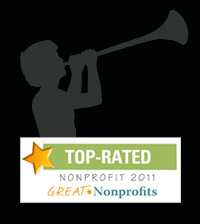Three
Applications of Creative Arts Therapy
Art
Therapy
Art
Therapy differs from other therapies
as it employs various art media; paint, clay, collage, etc. to facilitate
the child’s expression and conceptualization of areas of their
experience beyond the reach of words alone. Since the child creates
the art expressions with the materials, the interpretation and understanding
of them is guided by the child; not imposed by the Art Therapist.
Impact
The process of Art Therapy develops within
a triangular relationship between therapist, child and the image produced in
the session. Containment within the therapeutic alliance enables anxiety to be
held, providing a suitable environment for the safe expression of the abused
child’s feelings through the art work.
Education:
Educational and professional standards
for Clinical Art Therapists are regulated by the American Art Therapy Association.
Registered Art Therapist (ATR) credentials are granted by The Art Therapy Credentials
Board upon completion of a Master’s degree in art therapy and 1,000 hours
of supervised clinical training experience. The Registered Art Therapist who
successfully completes the written examination by the Credential Board is granted
Board Certified classification (ATR-BC) and must maintain the Certification through
continuing education credits.
Music Therapy
Music
Therapy combines music modalities
with humanistic, psychodynamic, behavioral and biomedical approaches
to help children attain therapeutic goals which can be mental, physical,
emotional, social or spiritual in nature. Children’s needs
are addressed both through the therapeutic relationship between child
and music therapist as well as approached directly through the music
itself.
Impact
Almost all children respond to music and if it is used
carefully and appropriately, the techniques of music therapy can reach into the
child’s potential for healing, learning and communicating. The powerful
emotions released through music therapy open up a unique opportunity for the
rehabilitation and development of abused children.
Education
The American Music Therapy Association represents
over 5,000 Music Therapists who receive credentials through the Certification
Board of Music Therapists (CBMT). To become a Certified Music Therapist (CMT)
a candidate must complete a Bachelor’s degree in music therapy and 900
hours of clinical internship. To receive an Advanced Certification in Music Therapy
(ACMT) requires a Master’s degree in music therapy and 100 contact hours
in continuing education as well as extensive clinical experience.
Dance/Movement
Therapy
Dance/Movement Therapy is rooted in the expressive nature of dance itself. Dance is
the most fundamental of the arts, involving a direct expression and experience
of oneself through the body. It is a basic form of authentic communication and
as such it is an especially effective medium for therapy. Based on the belief
that the body, the mind and the spirit are interconnected, dance/movement therapy
is defined by the American Dance Therapy Association as the psychotherapeutic
use of movement as a process that furthers the emotional, cognitive, social and
physical integration of the individual.
Impact
Dance/movement
therapy can effect changes in feelings, cognition, physical functioning
and behavior of abused children. Dance Therapists focus on helping
the child improve self-esteem and body image, achieve communication
skills and relationships, expand movement vocabulary, gain
insight into patterns of behavior and create new options
for coping with problems.
Education:
The American Dance
Therapy Association (ADTA) currently has over 1200 members throughout
the United States. A Registered Dance Therapist (DTR) is awarded
to entry-level Dance Therapists who have a Master’s degree
in dance therapy and 700 hours of supervised clinical internship.
The Advanced Registry (ADTR) is awarded only after the DTR has
completed 3,640 hours of supervised clinical work in an agency,
institution or special school with additional supervision from
an ADTR required.
|





